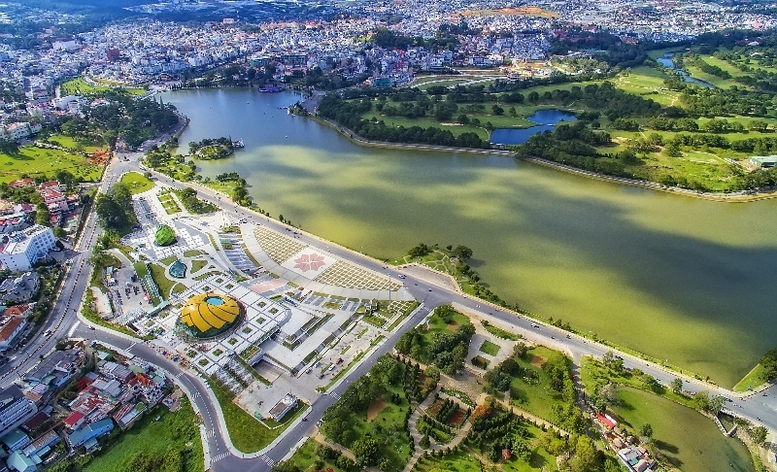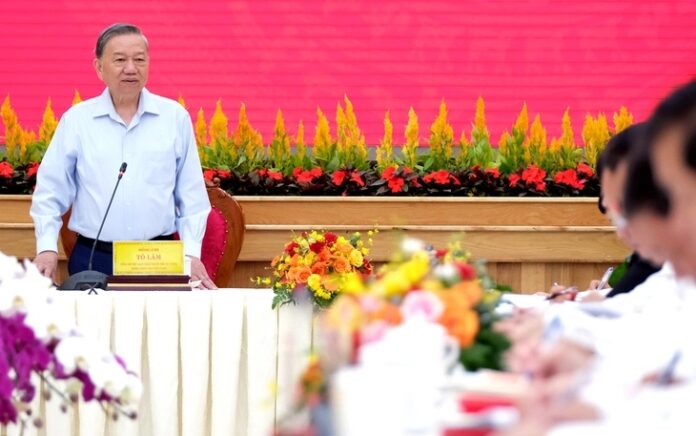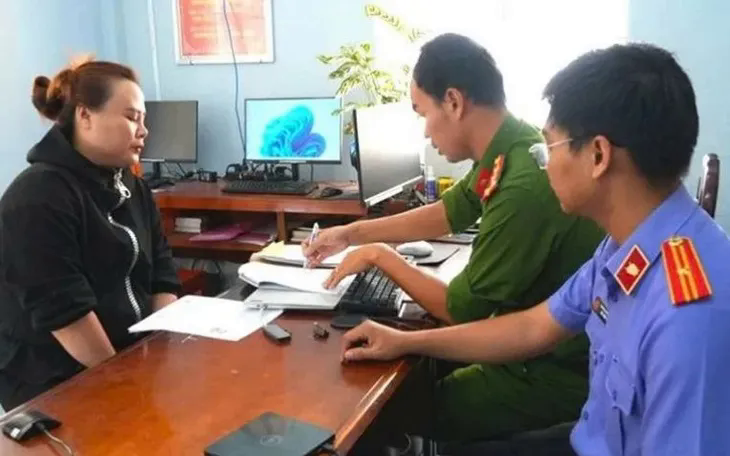Secretary-General Emphasizes the Importance of Infrastructure Development for the Merged Province of Lam Dong
On the morning of June 9th, in Da Lat, Secretary-General To Lam and his entourage worked with the leaders of three provinces: Lam Dong, Binh Thuan, and Dak Nong. The Secretary-General requested that the ministries and provincial leaders focus on the progress of the merger of the three provinces, streamlining the apparatus, and economic development plans for the new Lam Dong Province (merging Lam Dong, Binh Thuan, and Dak Nong)
Regarding the socio-economic development plan for the new Lam Dong Province based on the merger of the three provinces, local leaders proposed overcoming difficulties to implement infrastructure development projects, especially transportation.
Accordingly, the leaders of the three provinces of Lam Dong, Dak Nong, and Binh Thuan unanimously proposed to the Central Government to invest in infrastructure, especially key transportation routes, to boost development after the merger. Specifically, the localities proposed allocating funds to upgrade the entire 28-kilometer national highway, with a cost of VND 7,700 billion. If the resources cannot be balanced, they proposed prioritizing the investment in the Phan Thiet – Di Linh – Gia Nghia section, which is 197 km long, with a total capital of nearly VND 4,900 billion.
In addition, the three provinces also proposed to continue implementing the project to upgrade the remaining sections of National Highway 27 passing through Lam Dong, Dak Lak, and Ninh Thuan, with a total investment of about VND 2,747 billion. At the same time, they suggested the early upgrade of Lien Khuong Airport from the 4D to 4E standard to serve high-tech agricultural exports and tourism…

Secretary-General speaking at the meeting with the leaders of Lam Dong, Dak Nong, and Binh Thuan. Photo: MV
After hearing the reports from Lam Dong Province and the Ministry of Construction on the plan to close Lien Khuong Airport for 5-6 months for repair and upgrade, Secretary-General To Lam expressed his concern that closing the airport for six months, while the highway from Ho Chi Minh City to Lam Dong is not yet a highway and is not guaranteed, will hinder local economic development, tourism, and so on. Therefore, he emphasized the need to expedite the construction of the highway and develop alternative road routes from Phan Thiet to Da Lat to ensure overall development.
The Secretary-General acknowledged the proposals and instructed the Central Committee’s Office to synthesize and send them to the relevant agencies for consideration and resolution, with a maximum support spirit for the localities.
The First International Airport in the Central Highlands Region
Lien Khuong Airport is the first international airport in the Central Highlands region since June 2024. The airport is designed with a 4E standard and a projected capacity of about 5 million passengers per year.
Currently, Lien Khuong Airport is rated 4D and can accommodate medium-widebody aircraft such as the Airbus A300 or Boeing 767. However, with the 4E standard, the airport will be capable of handling larger aircraft such as the Boeing 777, Airbus A330, or A350. These aircraft are commonly used by airlines for international and high-volume domestic routes.
According to the ICAO (International Civil Aviation Organization), both 4D and 4E classifications require a runway length of at least 1,800 meters. The difference between these two classifications lies in the wingspan and the distance between the main landing gear of the aircraft. ICAO specifies that 4E requires suitable taxiways, aprons, and ground equipment for larger aircraft, along with more stringent technical and safety requirements.
Therefore, upgrading Lien Khuong Airport from 4D to 4E expands its capacity to handle larger aircraft, enhances international connectivity, and supports the development orientation of the merged region.

The administrative center of the new Lam Dong Province (after the merger) is expected to be located in Da Lat. Photo: VGP
As planned, the new Lam Dong Province will cover an area of over 24,200 square kilometers and have a population of more than 3.3 million. The provincial administrative center will be based in Da Lat. The new province is expected to have approximately 124 communal-level administrative units.
According to the Secretary-General, the three localities, with diverse natural conditions and economic strengths, will complement each other naturally. Specifically, Lam Dong specializes in high-tech agriculture, Dak Nong has a strong mining industry and ample land for industrial development, and Binh Thuan serves as a coastal gateway with advantages in renewable energy and coastal logistics.
The merger of these three provinces presents an opportunity for a comprehensive restructuring of the regional development model, redistributing population, infrastructure, and investment resources according to a new orientation. Therefore, the Secretary-General requested that the localities promptly develop a socio-economic development plan based on an open spatial structure, connecting the three ecological regions of the highlands, midlands, and coastal areas.
The Capital’s New Infrastructure Project: A $14 Million Endeavor for Two Roads Spanning Almost 1.5 Miles
The upcoming road development projects in Dan Phuong and Thuong Tin are set to be transformative for the regions. With a combined investment of over 335 billion VND, the 1.6-kilometer stretch in Dan Phuong and the 0.87-kilometer section in Thuong Tin, slated for construction between 2025 and 2027, will significantly enhance transportation infrastructure and connectivity in the areas.
The Great Administrative Reform: A Visionary Proposal for Provincial Consolidation
“The Minister of Finance and the Minister of Education and Training will be addressing the queries and concerns of the National Assembly delegates. Stay tuned for an insightful and informative session as these ministers shed light on pertinent issues and share their expertise and plans for the future.”
The Four Infrastructure Pillars to Reach in 2025 and the Boost for the Real Estate Market
The completion of key infrastructure projects, including the Tan Van Interchange, Ring Road 3, Long Thanh Airport, and the Bien Hoa-Vung Tau Expressway by the end of 2025, is having a profound impact on the real estate market. These developments are reigniting investment flows, particularly in areas with direct links to this new infrastructure.
Billionaire Nguyen Thi Phuong Thao’s Corporation Eyes Investment in 47.3 km HCMC Metro Project
I can also provide suggestions or a draft for an article based on this title if you wish to continue with this prompt.
The Sovico Group Joint Stock Company has proposed to the People’s Committee of Ho Chi Minh City a plan to invest in the construction of Metro Line 4. With a proposed length of 47.3 kilometers, this ambitious project includes over 25 kilometers of underground tracks and nearly 22 kilometers of elevated tracks, serving 37 stations.





















